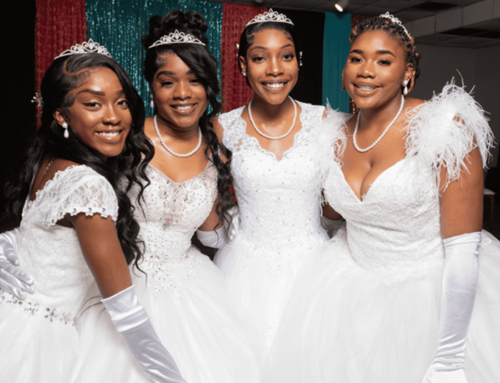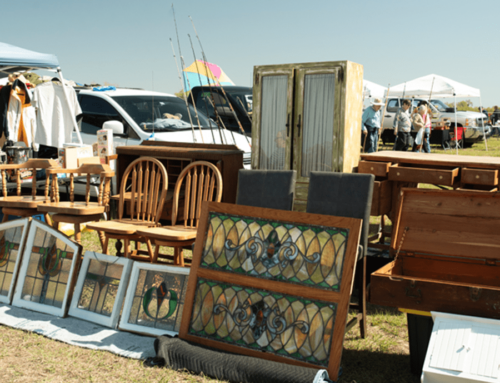By Mary Ann DeSantis
OUT+ABOUT: Cultural gems
PHOTOS: Mary Ann DeSantis+Courtesy of Crystal Bridges Museum of American Art + The Appleton Museum of Art
Throughout the South, in some highly unexpected places, extraordinary museums are highlighting world-class art.
Pablo Picasso, the late Spanish Cubist, once said the purpose of art was to wash the dust of daily life off our souls.
If your soul needs a little cleansing, you don’t have to travel to large metropolitan museums in New York or Paris to discover masterpieces. Many smaller cities and towns have worked hard to bring great works of art to their communities, sensing that art is a language that transcends cultural, social, racial, educational and even economic barriers.
Some of the most extraordinary museums are in the South, and can add beauty to our daily lives and transport us into other times and places.
Thomas Merton, a writer and Trappist monk, famously said “art enables us to find ourselves and lose ourselves at the same time.” I agree. Over the last year, I’ve been able to lose myself in the following museums for hours and emerge with a new outlook about the world we inhabit.
Appleton Museum of Art
Ocala
If you’ve not visited the Appleton because you thought an Ocala museum couldn’t possibly house works by world-renowned artists, you’re missing one of Florida’s gems. Tavares residents Toni and Don Cornell are among the many Lake County residents who’ve become fans.
“I came from outside Hartford, Connecticut, and was used to seeing lots of cultural places,” says Toni. “I was thrilled to find the Appleton.”
The two-story Italian travertine marble structure is an oasis along busy State Road 40. Set back from the road on 11½ acres of wooded property, the Appleton Museum was founded in 1982 to house the extensive art collection of Chicago businessman and part-time Ocala resident Arthur I. Appleton. The museum opened in 1987 and has been expanded several times to house more than 18,000 objects, including European, American, Asian, African, contemporary and pre-Columbian art and artifacts.
The Cornells are regulars in the Appleton’s Trips and Tours program, which takes members to other U.S. museums. They also helped raise funds to acquire a Christopher Still painting for the Appleton’s permanent collection.
“My father was a clam digger before he went into the Navy, and Still’s painting of oyster harvesters brought back a lot of memories,” Toni says. “I wanted to be part of that effort to get his painting for the Appleton.”
The Florida artist’s “And My Father Before Me” is one of several highlights in the Appleton’s permanent collection, and Still is in good company with masters such as Bouguereau, Rousseau and Whistler. The collection has grown significantly since Arthur Appleton’s initial pieces were donated. An exhibition of prints, paintings and objects acquired by the Appleton within the past several years runs Oct. 25–Feb. 1.
Crystal Bridges Museum of American Art
Bentonville, Arkansas
In the northwestern corner of Arkansas, the Crystal Bridges Museum of Art beckons tourists to a part of the country where they might least expect to find great works of art, even pieces formerly housed in the New York Public Library and in formidable private collections.
The sleek, curved structure in once-rural Bentonville is as awe-inspiring as the five centuries of American art it houses. Architect Moshe Safdie incorporated the crystal springs that run beneath and around the building as part of his design.
“I was impressed with the architecture and the natural surroundings from the minute we arrived,” says Francis Robacker of The Villages, who visited last April. “The structure, with its graceful curves and the flowing waters … it was very much a part of the environment. It was hard to believe they could take such a huge museum and make it so environmentally friendly.”
The story of the museum’s origins is as fascinating as the structure.
Bentonville is the home of Wal-Mart, and it was Sam Walton’s daughter Alice who had a vision to build a museum so children there could be exposed to great art free of charge. There is no admission to see the permanent collection, which features masterworks by artists from Colonial times through today.
Alice, who collected art even as a young girl, anonymously began acquiring great works long before the museum opened in November 2011. As more paintings were mysteriously bought, members of esteemed art establishments became curious. The “outing,” as a docent shared during my tour of Crystal Bridges, came in 2002 when Alice purchased the 1849 painting, “Kindred Spirits,” by Asher B. Durand from the New York Public Library. The New York media were incensed so many artworks were headed for rural Arkansas and dubbed Alice the “culture vulture.”
Undeterred, Alice amassed one of the premier art collections in the South. The nearly $500 million in acquisitions, mostly funded by the Walton Family Foundation and not Wal-Mart Stores Inc., include some of the world’s most priceless artworks. The collections are arranged chronologically so visitors get an overview of both art and American history. Highlights for me included Gilbert Stuart’s original painting of George Washington (1797), Winslow Homer’s “The Return of the Gleaner” (1867), Mary Cassatt’s “The Reader” (1877), and Andy Warhol’s “Dolly Parton” (1985).
Mobile Museum of Art
Mobile, Alabama
Housing an eclectic collection of works — from an unusual Picasso sculpture to a gallery dedicated to paintings of children — the Mobile Museum of Art is worth a stop in Alabama’s Port City. The 95,000-square-foot facility is celebrating its 50th anniversary in November with a special exhibit honoring the city’s legacy as the site of the first Mardi Gras.
If you think New Orleans was the home of Mardi Gras, the good folks in Mobile will set you straight.
“In 1703, French settlers in Mobile began celebrating Mardi Gras and the city has the oldest organized celebrations in the U.S.,” says Mary Lee Montgomery, the museum’s public relations director, who gave me a tour around a few of the upcoming exhibition pieces. “New Orleans didn’t organize celebrations until later.”
The “Art and Design of Mardi Gras,” which runs Nov. 8–May 3, will dominate the museum’s largest gallery, but other treasures shouldn’t be missed. The exquisite glass collection, including pieces by John Littleton and Emile Gallé, is housed in narrow galleries that overlook Mobile’s picturesque Langan Park. The museum’s Cochran Gallery of American Fine Art features 150 years of works.






































